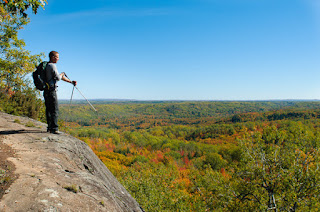WORLD HISTORY ADVANCED PLACEMENT - WHAP!
FALL SEMESTER AP REVIEW WEEK
Week at a Glance:MON: Historical "Periodization", Tips on AP M/CH
TUE: WHAP Themes, Tips on AP M/CH
WED/THU: MOCK AP Test (70 questions from fall sem in 55 min), After we'll "Introduce the DBQ"
FRI: Finish discussion on "How to WHAP the DBQ"
------------------------
Monday, Dec. 3, 2012
Quote of the Day: “We shall neither fail nor falter; we shall not weaken or tire...give us the tools and we will finish the job.” - Winston Churchill
Learning Targets for the week:
Targets from The College Board AP World History Course Description
Period 1: Technological and Environmental Transformations, to c. 600 B.C.E.
Period 2: Organization and Reorganization of Human Societies, c. 600 B.C.E. to c. 600 C.E.
Period 3: Regional & Trans-regional Interactions 600 to 1450
Essential Questions/Themes for the week:
Themes from The College Board AP World History Course Description
Theme 1: Interaction Between Humans and the Environment
• Demography and disease
• Migration
• Patterns of settlement
• Technology
Theme 2: Development and Interaction of Cultures
• Religions
• Belief systems, philosophies, and ideologies
• Science and technology
• The arts and architecture
Theme 3: State-Building, Expansion, and Conflict
• Political structures and forms of governance
• Empires
• Nations and nationalism
• Revolts and revolutions
• Regional, trans-regional, and global structures and organizations
Theme 4: Creation, Expansion, and Interaction of Economic Systems
• Agricultural and pastoral production
• Trade and commerce
• Labor systems
• Industrialization
• Capitalism and socialism
Theme 5: Development and Transformation of Social Structures
• Gender roles and relations
• Family and kinship
• Racial and ethnic constructions
• Social and economic classes
Agenda:
1. DO NOW QUESTION - What are the benefits of taking the AP Exam?
2. Notes, Video, Presentation: What you need to know about the AP Exam (Guide).
Students will work in cooperative groups to answer questions regarding periodization, themes, and regions of WHAP.
 |
| The beautiful Juniata River in Huntingdon, PA. |
Tuesday, Dec. 4, 2012
Quote of the Day: “Finish each day and be done with it. You have done what you could. Some blunders and absurdities no doubt crept in, forget them as soon as you can. Tomorrow is a new day, you shall begin it well and serenely...” - Ralph Waldo Emerson
Learning Targets for the week:
Targets from The College Board AP World History Course Description
Period 1: Technological and Environmental Transformations, to c. 600 B.C.E.
Period 2: Organization and Reorganization of Human Societies, c. 600 B.C.E. to c. 600 C.E.
Period 3: Regional & Trans-regional Interactions 600 to 1450
Agenda:
1. DO NOW QUESTION: Can you guess what score you will need to get on the WHAP Test to earn credit at each of these institutions of higher learning?
University of TexasTexas A&MTexas StateUniversity of HoustonStanfordHarvardUniversity of HawaiiBaylor UniversitySam Houston UniversityStephen F. Austin UniversityJuniata CollegeSan Diego State University
2. Notes, Video, Presentation: What you need to know about the AP Exam (Guide).
Students will work in cooperative groups to answer questions regarding periodization, themes, and regions of WHAP.
 |
| You may not realize, but our very own Peter Weller will be the voice of the animated Batman in "The Dark Knight Returns." |
Wednesday, Dec. 5 and Thursday, Dec. 6, 2012
Quote of the Day: “My therapist told me the way to achieve true inner peace is to finish what I start. So far today, I have finished 2 bags of M&M's and a chocolate cake. I feel better already.” - Dave Barry
Learning Targets for the week:
Targets from The College Board AP World History Course Description
Period 1: Technological and Environmental Transformations, to c. 600 B.C.E.
Period 2: Organization and Reorganization of Human Societies, c. 600 B.C.E. to c. 600 C.E.
Period 3: Regional & Trans-regional Interactions 600 to 1450
Agenda:
1. MOCK AP TEST: 70 multiple choice questions in 55 minutes. All from the fall semester up to 1500 and the end of Unit 3 and Chapter 13 of Strayer.
2. Notes, Video, Presentation: "How to WHAP the DBQ! (Guide)."
Seriously, I wasn't joking. It's Peter Weller. As Batman. Seriously. Seriously Awesome!
"I'm not finished yet." - The perfect line for the man.
------------------------
Friday, Dec. 7, 2012
Quote of the Day: "The man who does things makes many mistakes, but he never makes the biggest mistake of all - doing nothing." - Benjamin Franklin
Learning Targets for the week:
Targets from The College Board AP World History Course Description
Period 1: Technological and Environmental Transformations, to c. 600 B.C.E.
Period 2: Organization and Reorganization of Human Societies, c. 600 B.C.E. to c. 600 C.E.
Period 3: Regional & Trans-regional Interactions 600 to 1450
Agenda:
1. DO NOW QUESTION: Pick up the DBQ Packet. Analyze the first document using M-A-P.
2. Notes, Video, Presentation: "How to WHAP the DBQ! (Guide)."
3. Focus on P.O.V. - Point of View.
2. Notes, Video, Presentation: "How to WHAP the DBQ! (Guide)."
3. Focus on P.O.V. - Point of View.





















